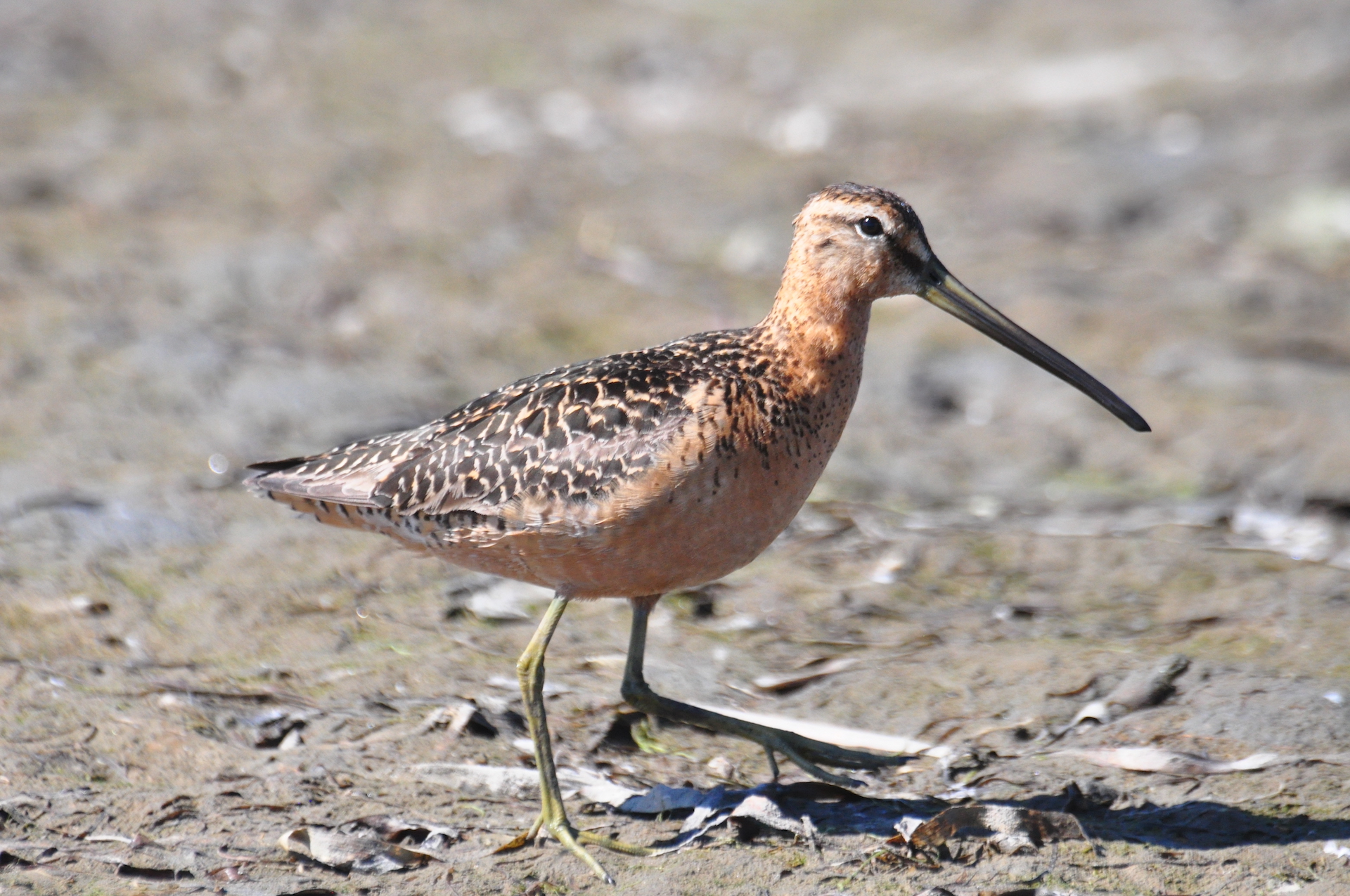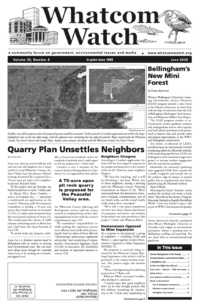by Joe Meche
The sweet spot at the end of April and the beginning of May is prime time to schedule ambitious and dedicated road trips. With Cindy jetting off to the Greek Islands for 10 days, I decided to hit the road for an adventure of my own, albeit not quite as adventurous and far away as Greece. As I approach my 80th birthday, my adventure level has changed accordingly, and, with my general distaste for the state of air travel these days, a good road trip suits me just fine. Since I’m not a big fan of the Everett-Tacoma stretch of I-5, I chose the Stevens Pass route to cross the Cascades. I was on the road early on the last Friday of April with my focus on the birds to come … along with a few favorite CDs, of course. A solo road trip requires an adequate selection of road trip music.
On the first day, I headed directly to Leavenworth and the Sleeping Lady Retreat to stretch my legs and touch base with the reliable white-headed woodpeckers. I found a nesting pair last year so I knew right where to go. As it turned out, a male was busy at a nesting hole in the same Ponderosa pine as last year. I could only wonder if this was the same woodpecker. Violet-green swallows were also nesting in the same tree. An employee of the retreat showed me a nesting hole that had been created by a white-headed in the siding of one of the cabins. Such is the tenacity of nesting woodpeckers.
After a quick lunch, I was back on Highway 2 to Coulee City and Sun Lakes State Park where I planned to camp overnight. On the afternoon of the first day, it didn’t take long for the heat to hit me as I traversed the barren landscape of the Waterville Plateau. This area is popular in the winter for snowy owls and large flocks of snow buntings. On this day, however, a lone red-tailed hawk was the extent of bird sightings. Waterville is the county seat of Douglas County where record temperatures range from a low of -35 to 105 degrees, which it seems is perfect for dry land wheat farming. When you’re on the back roads you gain new perspective when you see where other people live.
I found a sense of relief when I reached State Route 17 and dropped into the geologically significant cataract complex of Dry Falls and the Lower Grand Coulee. It’s essential to read the details of the catastrophic flooding to fully grasp the forces that created this natural phenomenon nearly 20,000 years ago. It would have been quite dramatic to witness the amount of water coming from the release of ice dams upstream. It is estimated that the floods were five times the width of Niagara Falls and 10 times the flow of all the current rivers of the world. This scenario occurred dozens of times after the last Ice Age. It’s very difficult to imagine that chaotic scene today as you stare from a 400-foot precipice and all you hear is quiet!
After a good night’s sleep, I followed State Route 17 south to Soap Lake to begin Day 2 on the lakeshore with American avocets, black-necked stilts, and western sandpipers. I spent time with shorebirds and breakfast at the lake and hit the back roads to Toppenish by skirting the immense scrublands of the Hanford Nuclear Reservation. My focus was to find the White Swan Road to Fort Simcoe State Park for acorn and Lewis’s Woodpeckers. Fort Simcoe is on the Yakama Indian Reservation and was the last of the pre-Civil War outposts. After a 52 mile round trip to the epitome of remoteness, I came away with one acorn and a dozen Lewis’s, most of which were too high in the oaks for good photos.
I drove over Satus Pass and more back roads to Bickleton for mountain and western blue birds. It takes a bit of courage to promote your town as the Bluebird Capital of the World, but that’s what the folks of this small, remote town did. I’m sure the folks in town thought about it before they made such a declaration. As it has been in the past, a local told me that I was two weeks too late to see the big numbers, but she directed me to a nesting site. I drove to the Bickleton cemetery north of town and was treated to the comings and goings of a brilliant male mountain bluebird while I enjoyed one of the best burgers ever … cooked by the same woman who gave me directions. It felt like I had won the daily double.
After two days of 80-degrees-plus weather and scenery that left a lot to be desired, I sought cooler temps so I headed for the Columbia River and found a slice of heaven at Beacon Rock State Park. It was cloudy and cool, and, by luck, I landed the last available campsite right on the river. I made morning coffee in a light drizzle and loved it! It was a sweet morning drive with the windshield wipers keeping time with the music … for the most part.
After an hour of driving on Day 3 I signed in to take the 7-mile auto tour route through the Ridgefield National Wildlife Refuge. This was the focus of my trip in the planning stages since I had heard so much about this place over the years. Winter is usually considered to be the best time of year at Ridgefield, though it didn’t disappoint in early May. The number one rule on the route is to stay in your vehicle, which is considered to be a rolling blind that allows the birds to carry on with the avian business at hand. My personal highlight of the morning was the great horned owl I discovered, not 30 feet from my perch behind the wheel!
It was a cool, overcast morning, and, after two loops, I decided it was time to follow more back roads and head for the coast, with the Tokeland marina as my goal. This tucked-away marina is somewhat legendary in birding circles, and rightfully so. Shorebirds and pelicans are the main attractions, and the idea that you’re literally at the end of the road seems to have a calming effect … at least, it works that way for me. I guess you have to make the long drive to fully grasp the idea. After a visit to another favorite spot … the Westport marina … I camped in the coastal cool at Twin Harbors State Park.
After one more visit to Westport the following morning, I stopped to visit Bottle Beach State Park, another top spot for shorebirds just off the road to Aberdeen. The main thing to remember about Bottle Beach is to wait for the high tide. At low tide, the birds are usually too far away to enjoy, but high tide puts them practically in your lap! On this particular day, thousands of migratory shorebirds were on the beach in their breeding finery. Dunlin mixed in with black-bellied plovers, western sandpipers, short-billed dowitchers, and semi-palmated plovers. It was quite a show, but I had to get back on the road for two more legs to continue my journey.
A hot shower and camp stove dinner closed the day at Ocean City State Park, which was practically deserted. The next morning I chose to drive the somewhat infamous back roads of the Olympic Peninsula that take you away from the coastal views, with the lone exception at Kalaloch. It was another long road, especially since I traveled via Neah Bay and Port Angeles before ending the day with a sunset at the Clallam County Campground at the Dungeness National Wildlife Refuge. You can see a theme here where I connect dots with birding hot spots along the way. It’s an old habit that I will never break.
My last day started with the typical cup of freshly-brewed coffee and a stop for more birds at Point Hudson in Port Townsend. As luck would have it, I was the second-to-last standby vehicle to get on the ferry, saving me from a two-hour wait. It was a typical Admiralty Inlet crossing to Keystone and the more familiar roads ahead to get home. Cindy was in Greece for five more days, so I had plenty of time to plan for her welcome home … at 1:30 a.m. (!) on Wednesday. We both had adventurous getaways.
__________________________
Joe Meche is a past president of the North Cascades Audubon Society and was a member of the board of directors for 20 years. He has been watching birds for more than 60 years and photographing birds and landscapes for more than 40 years. He has written over 200 columns for Whatcom Watch.






























